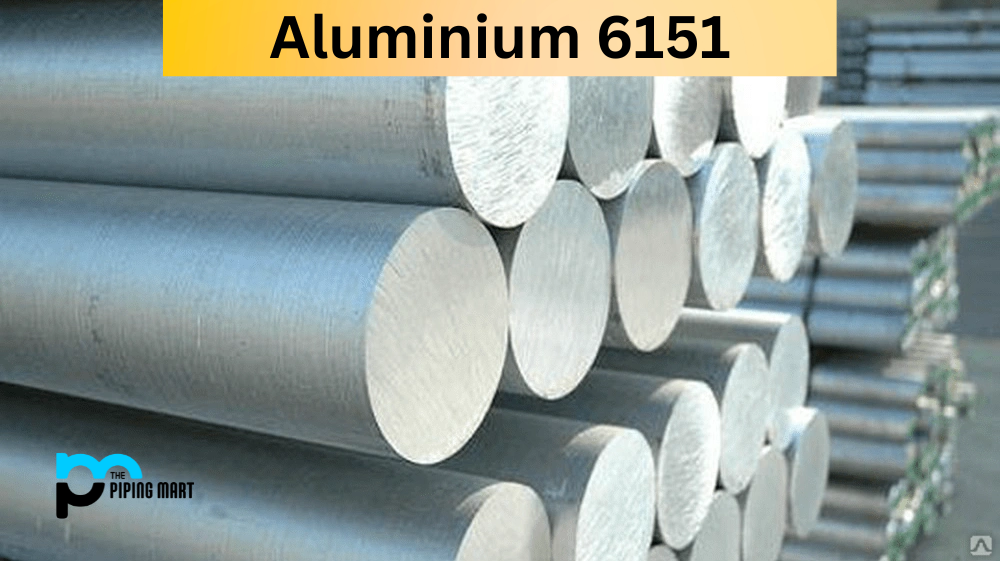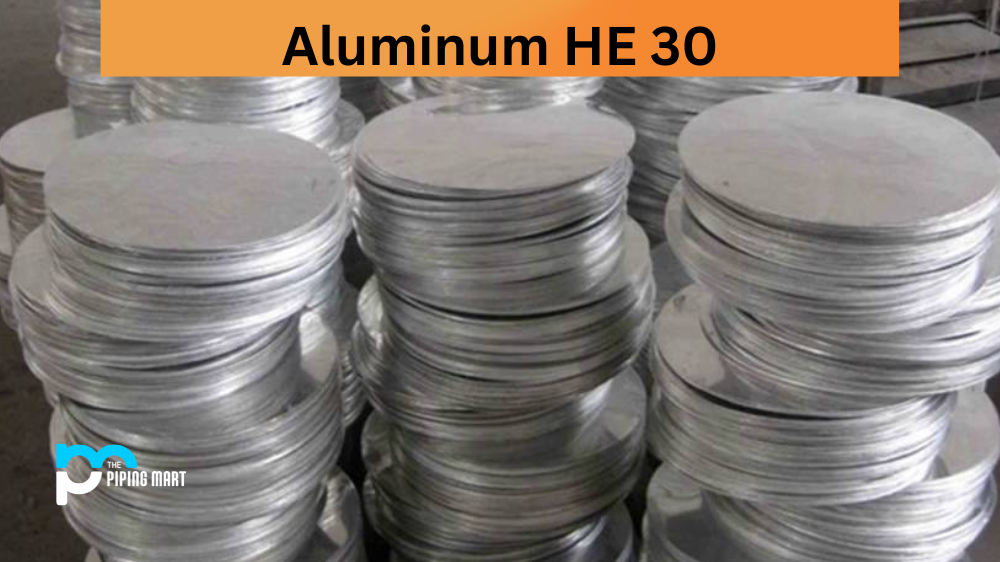Aluminium 6151 is an alloy that contains magnesium, manganese, silicon, and chromium. This combination of elements makes UNS A96151 ideal for a variety of industrial applications due to its superior corrosion resistance, heat resistance, machinability, weldability, and more. Let’s take a closer look at what aluminum 6151 has to offer.
6151 Alloy Composition
| Element | Content (%) |
|---|---|
| Aluminium / Aluminum, Al | 98.2 |
| Silicon, Si | 0.90 |
| Magnesium, Mg | 0.60 |
| Chromium, Cr | 0.25 |
6151 Alloy Physical Properties
| Properties | Metric | Imperial |
|---|---|---|
| Density | 2.7 g/cm3 | 0.0975 lb/in3 |
6151 Alloy Mechanical Properties
| Properties | Metric | Imperial |
|---|---|---|
| Elastic modulus | 70-80 GPa | 10152-11603 ksi |
| Poisson’s ratio | 0.33 | 0.33 |
6151 Alloy Thermal Properties
| Properties | Conditions | ||
|---|---|---|---|
| T (ºC) | Treatment | ||
| Thermal expansion | 23 (10-6/ºC) | 20-100 | – |
| Thermal conductivity | 205 (W/mK) | 25 | O |
6151 Alloy Uses
Aluminum 6151 has a variety of uses in the industrial sector due to its strong physical properties and heat-treatable characteristics. These include marine applications such as boat hulls and parts, automotive components such as engine blocks and cylinder heads, aircraft components like fuselages and wings, as well as structural components such as beams and columns. Its strength also makes it suitable for use in construction projects such as bridges.
Corrosion Resistance
One of the reasons why aluminum 6151 is so useful for marine applications is its excellent corrosion resistance. This means that even when exposed to salt water or other corrosive substances over long periods of time, it will not corrode or weaken. This makes it perfect for use in boats or other marine vessels where corrosion can be an issue.
Heat Resistance
Another benefit of using aluminium 6151 is its ability to resist high temperatures without becoming damaged or weakened. This makes it ideal for use in engine components or other heat-intensive applications where temperatures may reach up to 500°F (260°C). It can also withstand extremely cold temperatures without becoming brittle or cracking.
Heat Treatment
Aluminium 6151 can also be heat treated with ease thanks to its strong alloy composition. By subjecting the material to specific temperatures over time, it can be altered from soft and malleable into hard but still ductile material suitable for manufacturing complex parts with tight tolerances. Machining & Welding Finally, aluminum 6151 can be machined or welded relatively easily compared to other materials due to its good machinability rating (70%) and welding properties (class A4). This means that complicated parts can be made with precision without too much difficulty if you have the right tools and expertise.
Machining
Machining aluminium 6151 may seem daunting at first, but with the right techniques, it is possible to achieve a flawless result each time. The key to the successful machining of aluminum 6151 is proper preparation. Understanding the characteristics and capabilities of the alloy and selecting the right cutting tools is essential before any machining begins. Focus on maintaining speed and feed rates which are suited to the material for maximum efficiency and effectiveness during production runs. It also helps to frequently check parts for completeness to ensure correct milling and temperature control since over-processing or improper cooling conditions can cause heavy deformation in alloy parts. With these guidelines in mind, machining aluminium 6151 can become an achievable goal that leads to amazing results.
Welding
Welding aluminum 6151 is one of the most popular choices for a variety of construction and fabrication applications. The material is easy to work with and provides many advantages, such as corrosion resistance and good strength-to-weight ratio when compared to other weldable materials. Its popularity comes from its ability to be welded in all positions, which allows it to be used in a wide range of projects. It can also be formed easily into complex shapes without thinning. With careful preparation and skills, aluminum 6151 can produce strong, reliable welds, making it a go-to choice for many industries.
Conclusion:
As you can see, aluminium 6151 is an incredibly versatile alloy that has many benefits when used in industrial applications ranging from marine vessels to automotive engines and aircraft components. Its superior corrosion resistance, heat resistance, machinability, and weldability make it an excellent choice for any project requiring strong yet lightweight materials with great durability in harsh conditions. If you are looking for a reliable material that will stand up against the elements while providing exceptional performance over time, then aluminium 6151 may just be a perfect choice!

A passionate metal industry expert and blogger. With over 5 years of experience in the field, Palak brings a wealth of knowledge and insight to her writing. Whether discussing the latest trends in the metal industry or sharing tips, she is dedicated to helping others succeed in the metal industry.




